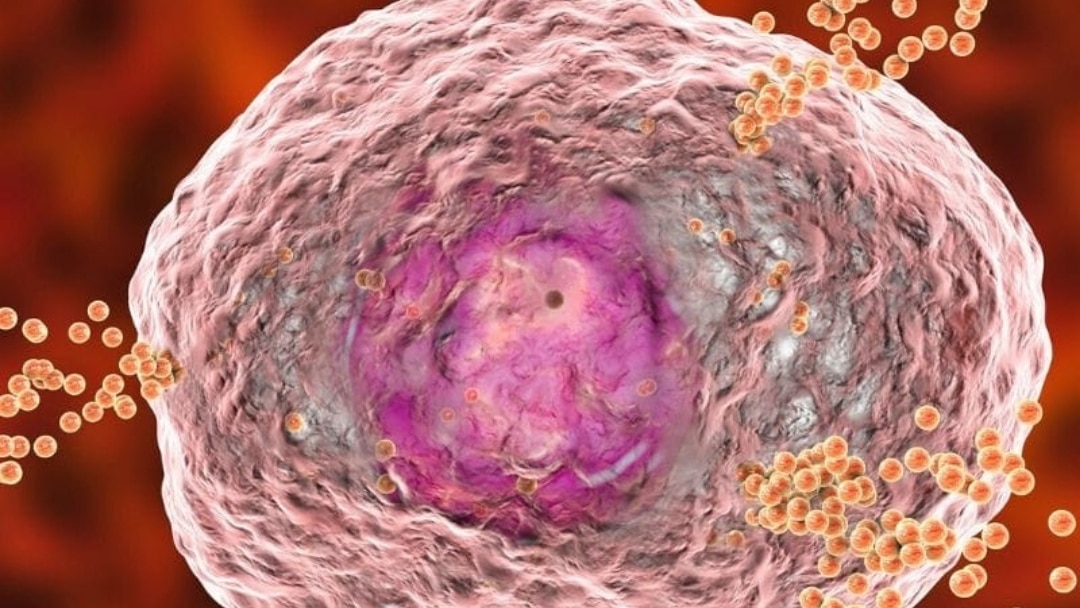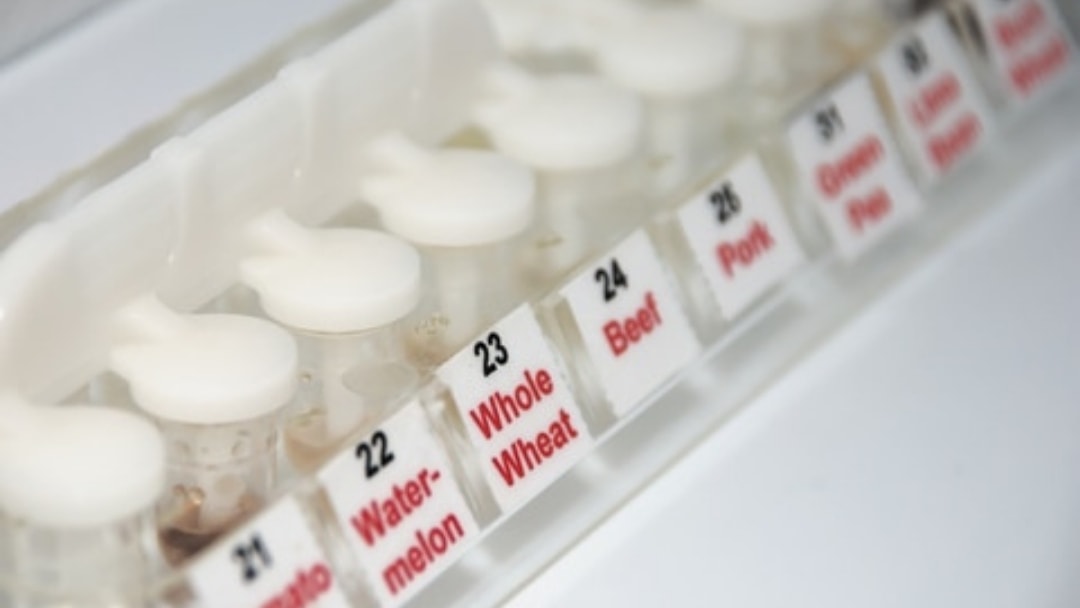We interviewed Beth O’Hara FN of Mast Cell 360 about histamine in kids and what can be done about it with a functional-naturopathic approach. You can watch the replay below. Please note that you will be asked to provide your email address at the 30-minute mark to continue viewing the replay.
What Is Histamine?
Histamine is a neurotransmitter that is known for its role in itchiness, swelling and other allergic symptoms. Exaggerated histamine responses are common in many children with autoimmune, gastrointestinal and neurological conditions.
What Is Mast Cell Activation Syndrome?
A mast cell is a white blood cell that contains a lot of histamine and thus plays a large role in allergies and anaphylactic reactions as well as pathogenic defense, wound healing, inflammation and blood-brain-barrier function. Mast Cell Activation Syndrome (MCAS) features inappropriate mast cell activation and can cause not only typical symptoms of allergy but also a host of other symptoms across multiple organ systems such as the skin, gastrointestinal, cardiovascular, respiratory, and neurologic systems.
In this Webinar
Key Discussions
Key discussions in this webinar include:
- Managing histamine in children
- Strategies to address histamine intolerance
- Recognition and management of mast cell activation syndrome (MCAS)
- The role of environmental factors like mold toxicity
- The significance of addressing root causes in chronic childhood condition
- The interplay between genetics, diet, and lifestyle in managing these health issues
This webinar also features personal insights from Beth O’Hara about her journey with MCAS, histamine intolerance, and related sensitivities. Additionally, there is an emphasis on tailored healing approaches, including the MC360 method and the use of genetic analysis in treatment plans. The importance of multidisciplinary approaches, considering emotional and environmental factors, and the potential for symptom reversal by addressing underlying issues were also highlighted.
In this webinar, Beth O’Hara helped us answer the following questions:
- What is Mast Cell Activation Syndrome (MCAS)?
- What are its symptoms?
- What causes MCAS? Is there a single cause?
- Is MCAS a reason why children with eczema, allergies and asthma are more likely to develop autism, ADHD and SPD?
- What is the relationship between MCAS and PANS/PANDAS and Lyme disease?
- How do you test for MCAS?
- What kind of genetic testing is helpful?
- Do food sensitivities play a role in MCAS?
- Why is mold such a common trigger of MCAS?
- What are other triggers?
- Why can’t kids just take anti-histamines if they have MCAS?
- How can functional naturopathy and stress reduction help those with MCAS?
Timestamped Overview
00:00 Founder of Mast Cell 360, naturopath, author.
06:08 Country upbringing, tick bites, medical school dream.
14:04 Fast-paced, stressful daily routine before pandemic.
16:55 EMFs, building materials create health risks.
26:15 Histamine is higher in leftover food.
31:08 Variety is important for a balanced diet.
35:36 Protective state against pathogens, toxins, and stressors.
38:09 Neurological inflammation affects skin, sensory processing, brain.
47:44 Traditional medicine has limits for complex conditions.
53:39 Genetic analysis discovers predisposition and initial breakthroughs.
56:37 Predispositions in mass cell and histamine genes.
01:08:36 Adjust airway, mast cell support, gradual tolerance.
01:15:10 Alcohol and Candida may cause histamine issues.
01:20:18 Enzyme breakdown, methylation, detox in histamine process.
01:23:27 Advice on soothing remedies, serotonin, dopamine.
01:30:30 Program helps rewire brain, heal trauma safely.
01:33:47 Team’s success due to effective method collaboration.
01:42:41 Criteria for diagnosing Mast Cell Activation Syndrome.
01:48:26 Estrogen impact on puberty, gluten and compliance.
01:57:05 Dosage of DAO depends on weight and budget.
01:59:11 Energized by community support after mild concussion.
About Beth O’Hara FN
Beth O’Hara is a Functional Naturopathic Consultant, specializing in complex, chronic cases of Mast Cell Activation Syndrome, Histamine Intolerance, Mold Toxicity, and related conditions.
She is the founder and clinical director of Mast Cell 360, a Functional Naturopathy Practice designed to look at all factors surrounding health conditions – genetic, epigenetic, biochemical, physiological, environmental, and emotional.
She designed Mast Cell 360 to be the kind of practice she wished had existed when she was severely ill with Mast Cell Activation Syndrome, histamine intolerance, mold toxicity, neural inflammation, Lyme, fibromyalgia, and chronic fatigue.

Her mission today is to be a guiding light for others with Mast Cell Activation Syndrome, histamine intolerance and these related conditions in their healing journeys.
She developed the MC360TM method which is used exclusively by the practitioners at Mast Cell 360 to build personalized, effective roadmaps for healing. Her method has now helped thousands of people with Mast Cell Activation Syndrome, mold toxicity, and sensitivities to regain their lives, their hopes, and their dreams.
She holds a doctorate in Functional Naturopathy, a Master’s degree in Marriage and Family Therapy and a Bachelor’s degree in Physiological Psychology. She is certified in Functional Genomic Analysis and is a Research Adviser for the Nutrigenetic Research Institute.
She presents at functional medicine conferences on Mast Cell Activation Syndrome and mold toxicity as well as the use of genetics and biochemistry in addressing chronic health conditions. You can find out more about her practice at her website mastcell360.com.
Disclaimer
This webinar is not a substitute for medical advice, treatment, diagnosis, or consultation with a medical professional. It is intended for general informational purposes only and should not be relied on to make determinations related to treatment of a medical condition. Epidemic Answers has not verified and does not guaranty the accuracy of the information provided in this webinar.
Still Looking for Answers?
Visit the Epidemic Answers Practitioner Directory to find a practitioner near you.
Join us inside our online membership community for parents, Healing Together, where you’ll find even more healing resources, expert guidance, and a community to support you every step of your child’s healing journey.
Sources & References
Afrin, L.B., et al. Often seen, rarely recognized: mast cell activation disease–a guide to diagnosis and therapeutic options. Ann Med. 2016;48(3):190–201. doi:10.3109/07853890.2016.1161231.
Afrin, L.B., et al. Mast cell activation disease: An underappreciated cause of neurologic and psychiatric symptoms and diseases. Brain Behav Immun. 2015;50:314–321. doi:10.1016/j.bbi.2015.07.002.
Campbell, et al. Mechanisms of Allergic Disease – Environmental and genetic determinants for the development of allergy. Clin Exp Allergy. 2015
Della Giustina, A., et al.. Vitamin D, allergies and asthma: focus on pediatric patients. World Allergy Organ J. 2014;7(1):27
Feehley, T., et al. Healthy infants harbor intestinal bacteria that protect against food allergy. Nature Medicine. 2019 Jan 14.
Frieri, M. Mast Cell Activation Syndrome. Clin Rev Allergy Immunol. 2018;54(3):353–365. doi:10.1007/s12016-015-8487-6.
Frieri, M., et al. Mast cell activation syndrome: a review. Curr Allergy Asthma Rep. 2013;13(1):27–32. doi:10.1007/s11882-012-0322-z.
Gupta, R.S., et al. The Public Health Impact of Parent-Reported Childhood Food Allergies in the United States. Pediatrics. 2018 Dec;142(6). pii: e20181235.
Hamilton, M.J. Nonclonal Mast Cell Activation Syndrome: A Growing Body of Evidence. Immunol Allergy Clin North Am. 2018;38(3):469–481. doi:10.1016/j.iac.2018.04.002.
Ly, N.P., et al. Gut microbiota, probiotics, and vitamin D: interrelated exposures influencing allergy, asthma, and obesity? J Allergy Clin Immunol. 2011;127(5):1087-94; quiz 95-6
Maksimova, O.V., et al. [Intestine microbiota and allergic diseases]. Zh Mikrobiol Epidemiol Immunobiol. 2014(3):49-60.
Petra, A.I., et al. Spectrum of mast cell activation disorders. Expert Rev Clin Immunol. 2014;10(6):729–739. doi:10.1586/1744666X.2014.906302
Prescott, S.L. Early-life environmental determinants of allergic diseases and the wider pandemic of inflammatory noncommunicable diseases. J Allergy Clin Immunol. 2013;131(1):23-30.
Sánchez-Pérez, S. et al. Intestinal Dysbiosis in Patients with Histamine Intolerance.
Nutrients. 2022 Apr 23;14(9):1774.
Sánchez-Pérez, S. et al. The dietary treatment of histamine intolerance reduces the abundance of some histamine-secreting bacteria of the gut microbiota in histamine intolerant women. A pilot study. Front Nutr. 2022 Oct 21;9:1018463.
Schink, M., et al. Microbial patterns in patients with histamine intolerance. J Physiol Pharmacol. 2018 Aug;69(4).
Schnedl, W.J., et al. Histamine Intolerance Originates in the Gut. Nutrients. 2021 Apr 12;13(4):1262.
Son, J.H., et al. A Histamine-Free Diet Is Helpful for Treatment of Adult Patients with Chronic Spontaneous Urticaria. Ann Dermatol. 2018 Apr;30(2):164-172.
Terwee, C.B. Succesful treatment of food allergy with Nambudripad’s Allergy Elimination Techniques (NAET) in a 3-year old: A case report. Cases J. 2008 Sep 19;1(1):166.
Tsabouri, S., et al. Modulation of gut microbiota downregulates the development of food allergy in infancy. Allergol Immunopathol (Madr). 2014;42(1):69-77.
Vassilopoulou, E., et al. The Impact of Food Histamine Intake on Asthma Activity: A Pilot Study. Nutrients. 2020 Nov 5;12(11):3402.
Yang, M.T., et al. Attention-deficit/hyperactivity disorder-related symptoms improved with allergic rhinitis treatment in children. Am J Rhinol Allergy. 2016 May;30(3):209-14.



